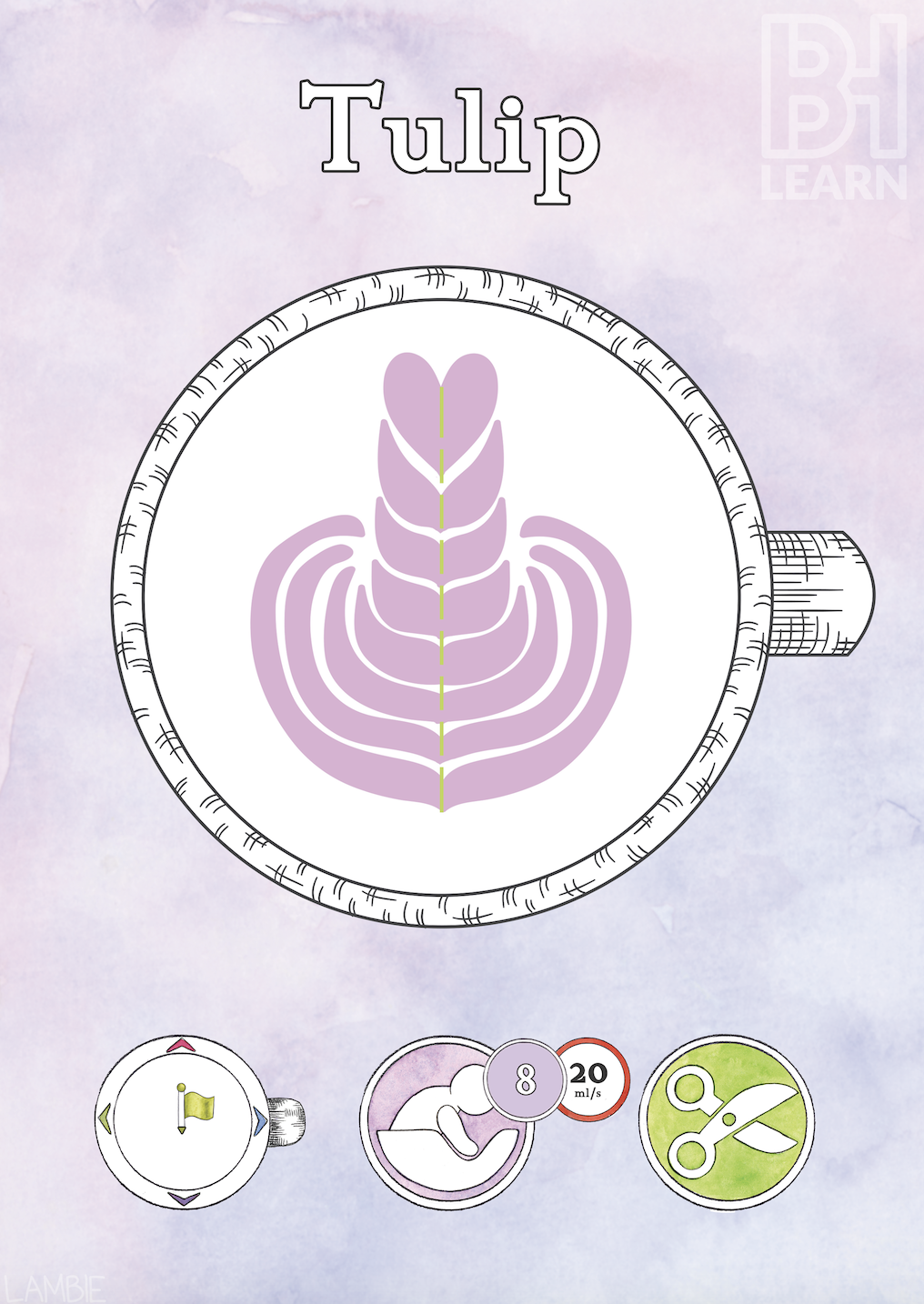The Tulip and Stacks

Just Pushing
The tulip is the perfect pattern to build on the techniques used to create the monk’s head and the heart. Like the heart, it is a two-element pattern and it involves a cut-through to finish the design. The basis of the tulip design is the pushing manoeuvre. By combining the pushing pitcher technique with the natural eddy flow in the cup, you can create many beautiful crescent shapes in succession.
The pattern lends itself to milk which has been more aerated, and it works particularly well on cappuccinos. The tulip design has been poured by national latte art champions, even in the final round of competition. It is popular because it is easy for a barista to pour well while working under time pressure. In addition, the pushing technique doesn’t require the same amount of finely tuned movements required to create the rosetta, which requires the shaking technique.
Stacks of a tulip aren’t poured only along the north-south axis. They can be laid down around the outside of the cup in any orientation. This can allow for a greater number of stacks. You can add as many as twenty, which calls for a rotation of the cup to make room for more petals. Whilst this might sound like the domain of very advanced artists, use the rotation technique to practice when you are at any level of skill development, particularly if your conventional patterns are not taking shape. A switch to asymmetry could be just what you need.
As you explore asymmetric placement of patterns, it follows that your tilting of the cup will also shift away from the north-south axis. You will begin to tilt the cup towards the position of the spout of your milk pitcher as the cup rotates.
Specifications for the Tulip Design and Stacks
Canvas height: The halfway point — though if you wish to pour upwards of 10 petals per cup, you may need to begin making the pattern a little before the halfway point.